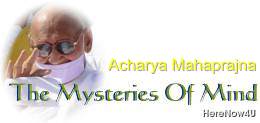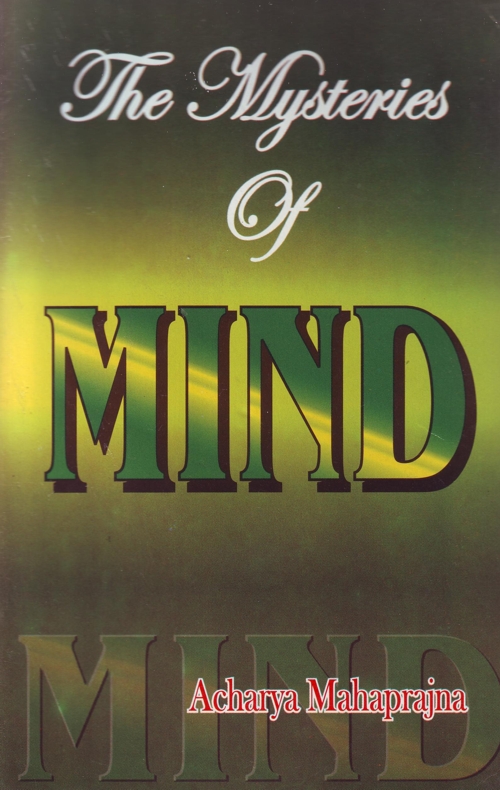
The path of this journey lies within the body itself. There are two centres in the body. One of them is called the centre of consciousness and the other the centre of sex energy. The former is situated in the upper part of the body, which extends from the navel to the head and the latter in the lower part of the body below the navel. Our consciousness remains confined about these centres where it becomes thickly concentrated and its flow becomes forceful. The sex centre is the chief source of energy. The entire consciousness and energy remain collected around this centre, particularly around the navel and the plexternal organ. There is very little energy in and about the knowledge centre because the modern man is more inclined towards sex. His entire energy and consciousness have become concentrated near the sex centre. He pays more attention to and shows greater interest in the sex centre. Psychologists tell us that the sex-instinct produces greater tension in man than any other instinct. We experience tension due to fear, anger, jealousy and other emotions only seldom. The tension produced by the sex-instinct is also very heavy. It has very deep roots. It maybe said that the base of krsna lesya, nila lesya and kapota lesya, the three inauspicious colorations of the soul lie somewhere here. Every one of our tendencies has its base or centre in the gross body from which it manifests itself. The centres, from which these colourations manifest themselves, lie somewhere between the sex centres and the area in which the apana air collects. These are also the centres to be meditated upon in arta and raudra meditations. It is these centres, which feed our likes and dislikes, restlessness due to feelings, cruelty, jealousy, hatred, etc. They affect consciousness collected around them and excite our emotions.
The vital energy, which we possess, manifests itself in various forms. It has ten forms. When it is associated with the sense organs, through which it manifests itself, it assumes the form of the five pranas according to the sense organ it employs as the instrument of its expression:
- prana associated with the sense of touch, prana associated with the sense of taste, with that of smell and with that of sight.
Vital energy produces willpower when it be comes associated with the mind. It strengthens the body and speech. It is in this way that vital energy has been classified into ten forms like the ten currents of a single river. It activates breath and brings about longevity.
When vital energy begins to flow downwards into the sex centre, the sex centre becomes the centre of man's entire existence, of his body and of his consciousness. Thoughts, which hover around consciousness tied to the sex centre, become soaked into krsna lesya, or nila lesya or kapota lesya.
Thoughts associated with adharma or inertia and all the changes which arta or raudra meditations bring about find a congenial atmosphere around the sex centre.
Inability to restrain the sense organs is a characteristic of krsna lesya. The tendency to give a long rope to the sense organs is born somewhere near the sex centre. The concentration of consciousness around the sex centre is the effect of krsna lesya.
The truths, which the Jain thinkers tried to expound in the light of the six colourations of the soul, have been expounded by the Hatha Yoga School of philosophers in the light of the cakras or plexuses and glands in the human body. Both the schools have framed their own definitions. There is no basic difference between these schools except in matters of definition. According to the Hatha y oga there are three cakras in the upper part of the body and three in the lower part. The muladhara, svadhisthana and manipura cakras are situated in the lower part of the body below the heart and the anahata, ajna and sahasrara in the upper part of the body above the heart.
When the muladhara cakra remains active, it produces excitement. When the svadhisthana cakra remains active it produces sexual excitement. When the manipura cakra remains active it produces jealousy, hatred, cruelty, etc. This also applies to the three inauspicious lesyas, which take place in the same centres or cakras. It is from these centres that consciousness descends downwards.
Jain acaryas have constructed the model of lokapurusa. They have represented the universe in the form of apurusa or ideal man. The body of the lokapurusa is divided into three parts, the upper, the middle and the lower. Divine beings reside in the upper part, human beings in the middle part and infernal beings in the lower part. The seat of the emancipated souls lies in the upper part, which is situated above the heart. Gods and emancipated and perfected souls live in the upper part, human beings in the middle part and the hell lies in the lower part below the waist. Dharma lesyas or auspicious colorations of the soul, take place in the upper part whereas adharma lesyas or inauspicious colorations in the lower part of the body.
Deha-preksa or perceptive meditation of the body begins by concentrating the mind on the heart. There is a reason for this. In meditation we first carry the vital energy upwards. Once this energy has been developed, there will be no harm if it is carried down wards. But if consciousness happened to be bogged down in the lower parts of the body, it would produce serious consequences. If we are earnest about having a perception of ultimate reality, or of the light of consciousness, we will have to perform an ascending journey. We will have to carry the vital energy upwards in order to get rid of the baser instincts. With the ascent of the vital energy a marked change in the operation of the baser instincts will begin to take place.
 Acharya Mahaprajna
Acharya Mahaprajna

